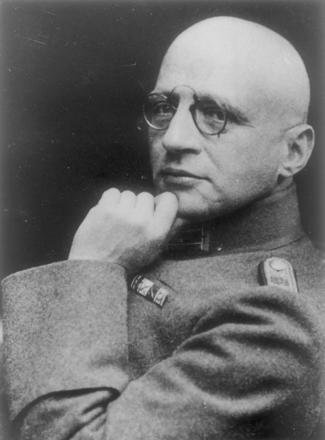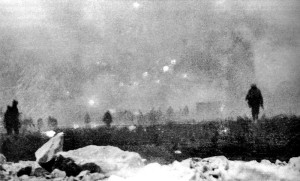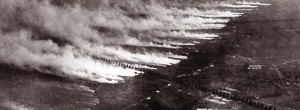On the 25th September 1915 the British Army used poison gas for the first time.
Echoing public opinion around the world, the United Nations Secretary General has described the use of chemical weapons in Syria as a terrible ‘war crime’ and has called upon the international community to bring the perpetrators to justice.
Since March 2011 more than a hundred thousand men, women and children have been killed in the fighting, all but a tiny number to conventional weapons like the bullet and the bomb. Britain, France and the United States did not find in these casualties good cause for military intervention. But the chemical attack on the Damascus suburb on August 21st was what Americans like to call a ‘game changer’. A line had been crossed, President Obama told the world.
In my novel The Poison Tide I tell the story of the German use of biological weapons in World War 1. One of my characters visits ‘the father’ of chemical weapons, Professor Fritz Haber [below] in search of moral guidance.
Is it right, is moral for a scientist to become involved in the production of chemical and biological weapons, he asks? The use of poison gas had been outlawed by international law. The Hague Declaration of 1899 had attempted to lay down the principle that some methods of combat were uncivilised. But Haber believed it to be his patriotic duty as a German scientist to play a part in his country’s war effort. What’s more, he could see no ethical difference between blowing someone to pieces and poisoning them in a gas attack. If anything, the use of chemical weapons on the battlefield was ‘a higher form of killing’. So sure was Haber of his moral position, he personally supervised its first use in battle against the British and French in April 1915. The shock caused by poison gas, its ability to penetrate even the strongest defences gave him hope that chemical warfare might break the stalemate on the Western Front. Talk of humane killing and death was nonsense, he contended, if science could bring the war to a swift conclusion lives would be saved. And there were soldiers and scientists on the allied side who agreed with him. Within six months of the first German poison gas attack, the British were ready to launch their own: on September 25th 1915 at the Battle of Loos.
In the days before, one hundred and fifty tons of chlorine gas in 5,500 high-pressure steel cylinders were transported across the English Channel to France in unmarked wooden boxes. In the interests of secrecy, the gas was known only as ‘the accessory’. On arrival in France it was transported to the Western Front by rail. From the railway sidings the cylinders were man-handled into trenches under conditions of complete security, including aerial surveillance.
By midnight, 24th September 1915, all the cylinders were in place in the forward trenches. The gas was to be released along 6.5 miles of front from the slagheaps south of Loos to the La Bassée Canal. General Douglas Haig hesitated because the wind was light and there was risk the gas would blow back towards the British lines. Nevertheless, at 0550 hours the order was given to release poison gas for the first time. The greenish-yellow gas hissed from the containers and rose in the air forming a cloud about forty feet high, that drifted very slowly towards the enemy. In some parts of the line the chlorine gas moved so slowly by the time it reached the Germans it was too diluted to cause serious casualties. In the centre of the battlefield it drifted back to the British trenches and some soldiers were poisoned by their own gas.
Among those waiting to attack behind the gas cloud at Loos that day were the men of the 6th battalion The Queens Own Cameron Highlanders. Many in their ranks were volunteers drawn from students and staff of Glasgow University. Shoulder to shoulder with them, the hero of my new espionage thriller, The Suicide Club [published November 2014]. Of Alexander Innes, more later in the year.
The failure of the first British poison gas attack at Loos to bring about a breakthrough did not dampen enthusiasm for the weapon. German innovations were matched by the British and French throughout the war. By the time the war ended at least 1.3 million men had been wounded by gas, and perhaps 90,000 of them had died. Fearing he would be tried as a war criminal, Fritz Haber fled to Switzerland. Not a bit of it – in 1919 he was honoured with the Nobel Prize for his pre war work on the synthesis of ammonia. But his involvement in pioneering poison gas was not without a personal cost. One of its first casualties was his wife, Clara, a brilliant chemist in her own right. Unable to accept her husband’s work was anything but a perversion of science, she took her own life in protest.



